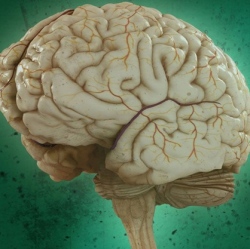
A team of researchers has developed a tiny “wireless optofluidic neural probe” the width of a human hair that can be implanted in the brain and triggered by remote control to deliver drugs and activate targeted populations of brain cells.
The technology may one day be used to treat pain, depression, epilepsy, and other neurological disorders in people by targeting therapies to specific brain circuits with fewer side effects, according to the researchers at Washington University School of Medicine in St. Louis and the University of Illinois at Urbana-Champaign.
The research builds on earlier work in optogenetics, a technology that makes individual brain cells sensitive to light and then activates those targeted populations of cells with flashes of light. The study was published online today (July 16) in the journal Cell and will appear in the July 30 print issue.
Previous attempts to deliver drugs or other agents, such as enzymes or other compounds, to experimental animals have required the animals to be tethered to rigid pumps and tubes that restricted their movement and often caused them to experience stress.
The new wireless optofluidic neural probes were built with four chambers to carry drugs directly into the brain via microfluidic channels and microscale pumps, and the probes are soft like brain tissue.
